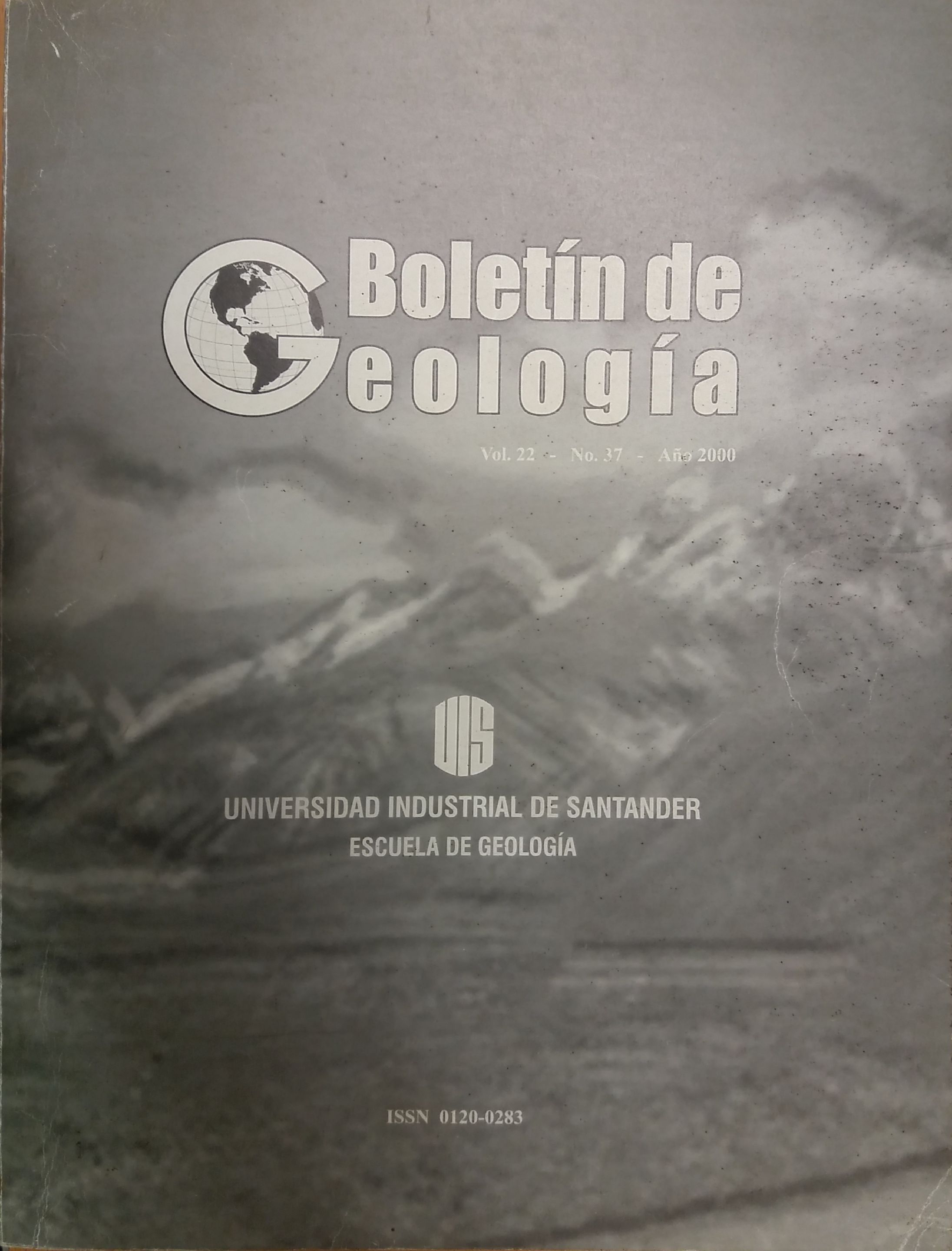Articles
Anomalías Geobotánicas Espectrales asociadas con cambios en Litología: Su uso para la cartografíageológica de rocas ultrabásicas, en terrenos totalmente vegetados de la Costa Pacífica Colombiana
Published 2000-07-03
Keywords
- Remote sensing,
- geobotany,
- geological mapping,
- ultrabasic rocks,
- Colombian Pacific Coast
How to Cite
Villegas, V. H. (2000). Anomalías Geobotánicas Espectrales asociadas con cambios en Litología: Su uso para la cartografíageológica de rocas ultrabásicas, en terrenos totalmente vegetados de la Costa Pacífica Colombiana. Boletín De Geología, 22(37), 68–76. Retrieved from https://revistas.uis.edu.co/index.php/revistaboletindegeologia/article/view/3966
Abstract
It has long been known that soils developed on ultramafic rocks inhibit the growth of vegetation. Taking into account this, digital processing was carried out in a Colombian Pacific Coast Landsat TM subscene, where the Guapi Ultrabasic Lithodeme outcrops. The ratio TM4/TM3 image proved to be powerful for identifying spectral geobotanical anomalies of sparse vegetation, related to a NS to NE-SW trending ultramafic belt exposed throughout the study area. The contrast stretched TM4 image allowed to diferenciate another two ultramafic lensoid boudins different from the belt, which seem to have the same lithology.
Downloads
Download data is not yet available.
References
Almeida-Filho, R. (1984). Multiseasonal and geobotanicalapproach in remote detection of albitised-greisenized areasin the Serra da Pedra Branca granitic massif, Goiás State,Brazil. Economic Geology, Vol. 79, pp. 1914-1920
Annells, R.N., Forero, H.F., Rodríguez, C.A. (1988).Geology and gold potential of the Timbiqui and Napi Riverbasins, Cauca Department, Colombia. British GeologicalSurvey, Nottingham, technical report WC/88/45, p. 99
Aspden, J.A. (1984). The geology of the WesternCordillera and Pacific Coastal Plain in the Department ofValle del Cauca (Sheets 261, 278, 279, 280 and 299).INGEOMINAS-MISIÓN BRITÁNICA (BritishGeological Survey), Cali, preliminary report No. 7, p. 45
Etayo, F. et al. (1986). Mapa de terrenos geológicos deColombia. Publicaciones Geológicas Especiales deINGEOMINAS, Bogotá, No. 14-1, p. 253
Goetz, A.F.H., Rock, B.N. (1983). Remote sensing forexploration: an overview. Economic Geology, Vol. 78,pp. 573-590
Greenbaum, D. (1989). Introduction to geological remotesensing. Course notes for students. British GeologicalSurvey, Nottingham, p. 101.
Annells, R.N., Forero, H.F., Rodríguez, C.A. (1988).Geology and gold potential of the Timbiqui and Napi Riverbasins, Cauca Department, Colombia. British GeologicalSurvey, Nottingham, technical report WC/88/45, p. 99
Aspden, J.A. (1984). The geology of the WesternCordillera and Pacific Coastal Plain in the Department ofValle del Cauca (Sheets 261, 278, 279, 280 and 299).INGEOMINAS-MISIÓN BRITÁNICA (BritishGeological Survey), Cali, preliminary report No. 7, p. 45
Etayo, F. et al. (1986). Mapa de terrenos geológicos deColombia. Publicaciones Geológicas Especiales deINGEOMINAS, Bogotá, No. 14-1, p. 253
Goetz, A.F.H., Rock, B.N. (1983). Remote sensing forexploration: an overview. Economic Geology, Vol. 78,pp. 573-590
Greenbaum, D. (1989). Introduction to geological remotesensing. Course notes for students. British GeologicalSurvey, Nottingham, p. 101.
